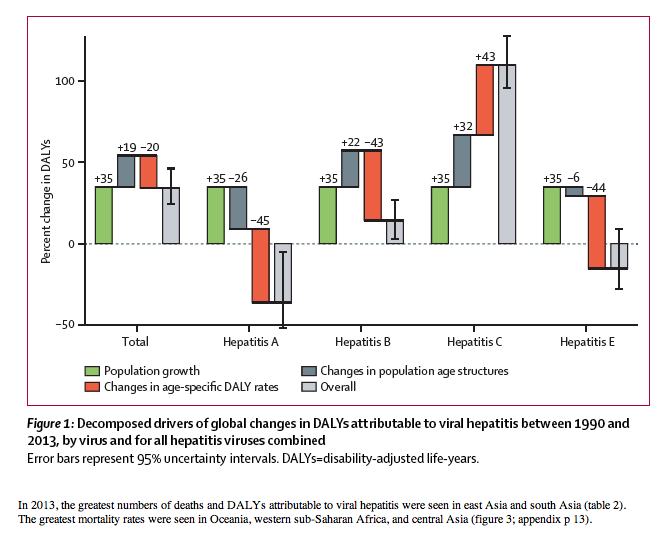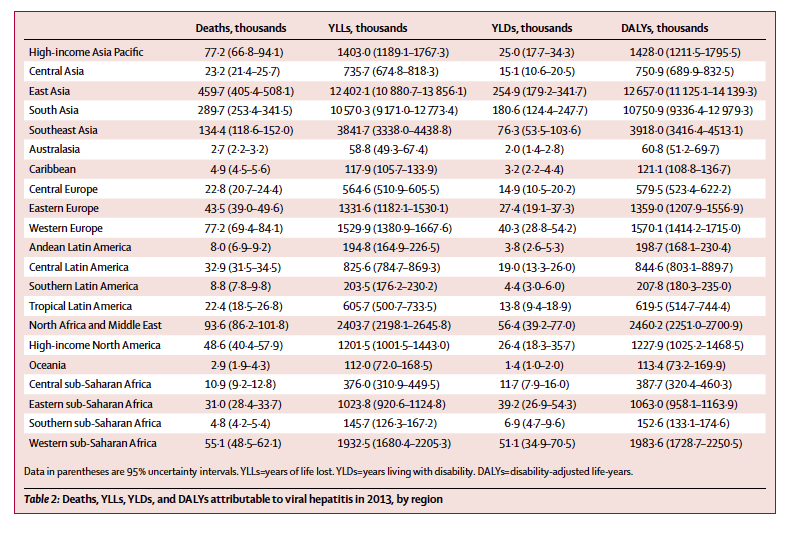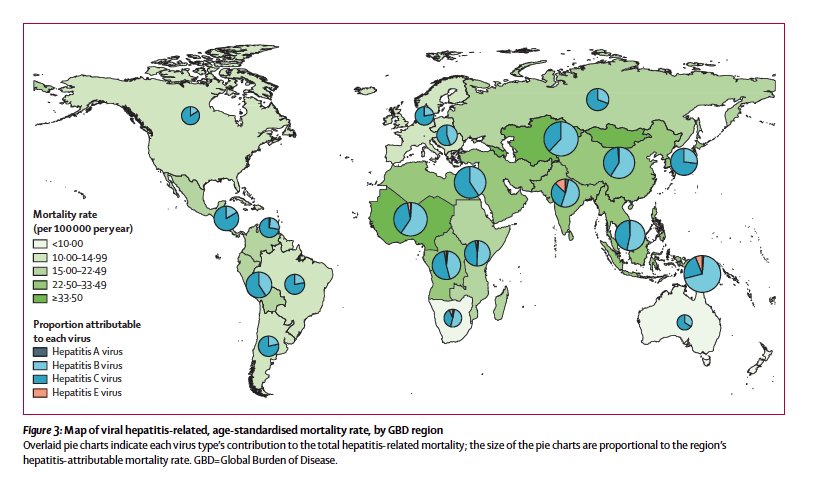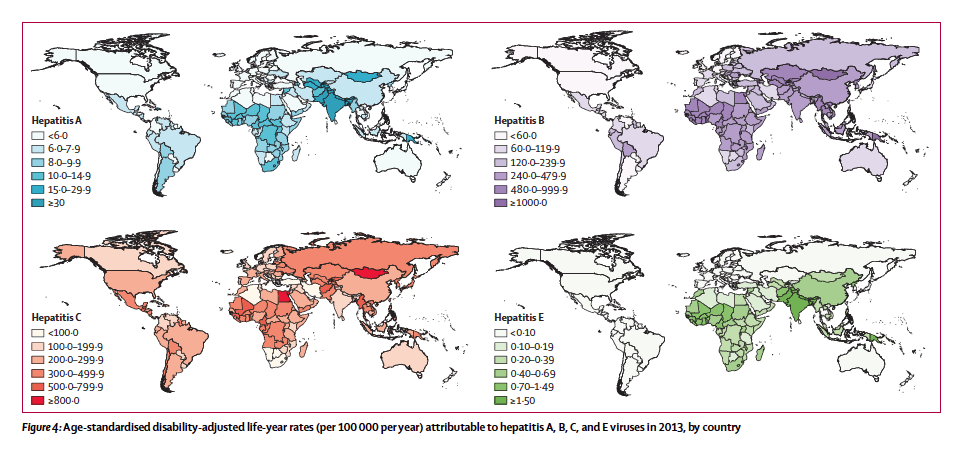| |
HCV Drives Increased Mortality to Ranking of 7th Globally in US, Europe, Russia, Australia, Central/South America/North Africa....."a greater proportion of mortality in Europe, the Middle East, the Americas, and north Africa is attributed to HCV than to HBV"
|
| |
| |
Download the PDF here
The global burden of viral hepatitis from 1990 to 2013: findings from the Global Burden of Disease Study 2013..... - (07/07/16)
[from Jules: See Figure 3,4 below: HCV drives mortality in US, Australia & Western Europe]
"The relative burden of disease for HBV and HCV varies between and within geographical regions (figure 4). Broadly, a greater proportion of mortality in Europe, the Middle East, the Americas, and north Africa is attributed to HCV than to HBV, whereas in sub-Saharan Africa and most of Asia, the converse is true (figure 3; appendix pp 14-15). Most mortality attributed to HAV and HEV is in sub-Saharan Africa and Asia. The proportion of deaths due to HAV, HBV, and HEV has declined, whereas the proportion due to HCV has increased since 1990 (appendix p 11)."
"viral hepatitis is 7th leading cause of death...HCV leads the way & secondly HBV....authors state funding is "disproportionate"- death rates have surpassed in 2013 tuberculosis, AIDS, and malaria......Together, viral hepatitis deaths from acute infection, cirrhosis, and liver cancer were the tenth (95% UI tenth to 12th) leading cause of death worldwide in 1990 and seventh (seventh to eighth) leading cause in 2013.....Absolute numbers of deaths attributed to viral hepatitis have risen substantially by 63% and DALYs [Disability-adjusted life-years] by 34% during 1990-2013.....The small proportion of global health funding targeted at viral hepatitis is disproportionate to its importance as a major cause of death and disability"
"When combined, HBV and HCV accounted for 96% (95% UI 94-97) of viral hepatitis-related mortality and 91% (88-93) of viral hepatitis-related DALYs in 2013 (appendix p 11). This finding has not changed significantly since 1990, when they accounted for 92% (90-94) of mortality and 84% (80-88) of DALYs. Of the 96% of viral hepatitis-related mortality resulting from HBV and HCV in 2013, the two viruses accounted for nearly equal amounts (HBV 47% [45-49] vs HCV 48% [46-50]). Most mortality is attributable to liver cancer and cirrhosis due to HBV and HCV (appendix p 12).
"Viral hepatitis is unusual among leading communicable diseases because the distribution of morbidity is evenly divided between high-income and low-income settings. Biomedical advances have led to efficacious vaccines and treatments for HBV and HCV that could be delivered at scale, but it is too early to say whether treatment scale-up will be able to control transmission. However, by contrast with tuberculosis, HIV/AIDS, and malaria, mechanisms to fund these interventions in the poorest countries are largely non-existent, except for individuals who are also infected with HIV. The small proportion of global health funding targeted at viral hepatitis is disproportionate to its importance as a major cause of death and disability.29 Our results suggest that an evolution in funding structures is required to accommodate the burden of viral hepatitis and allow effective responses in low-income and lower-middleincome countries."




|
|
| |
| |
|
|
|